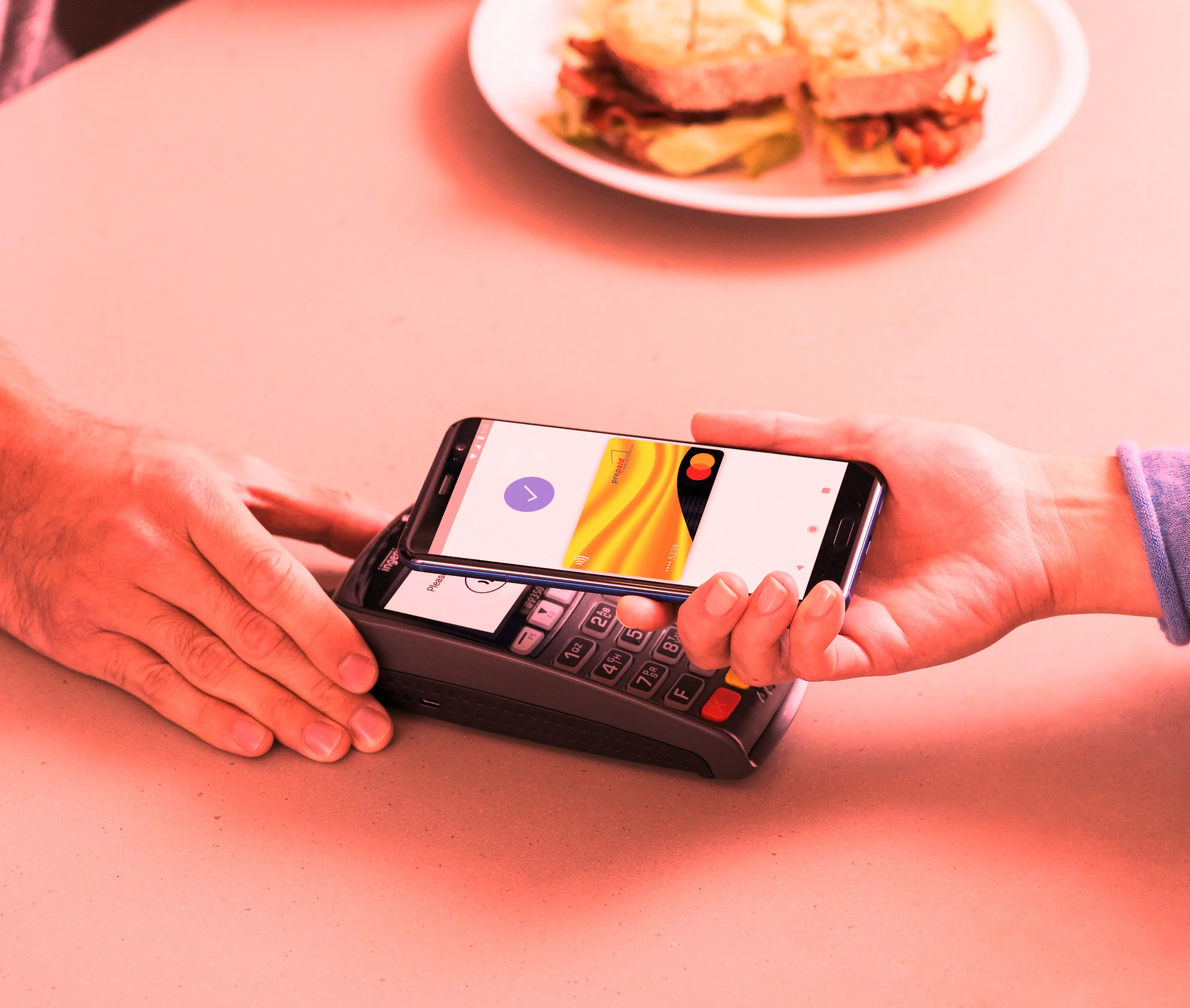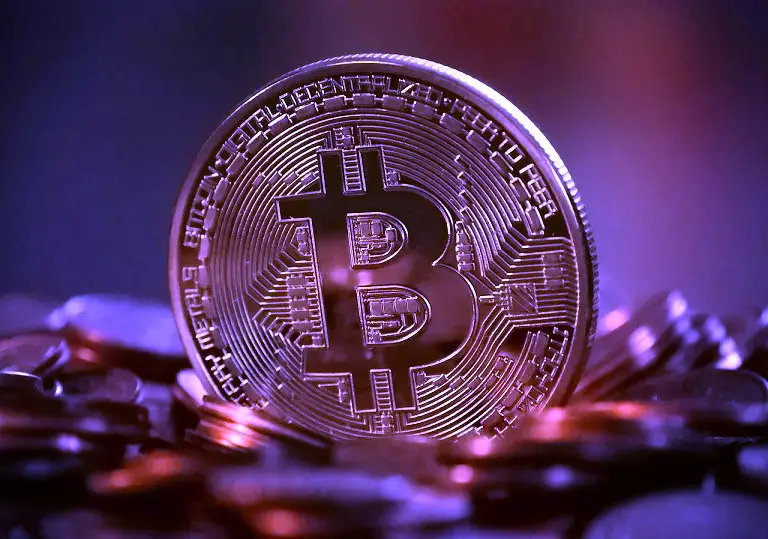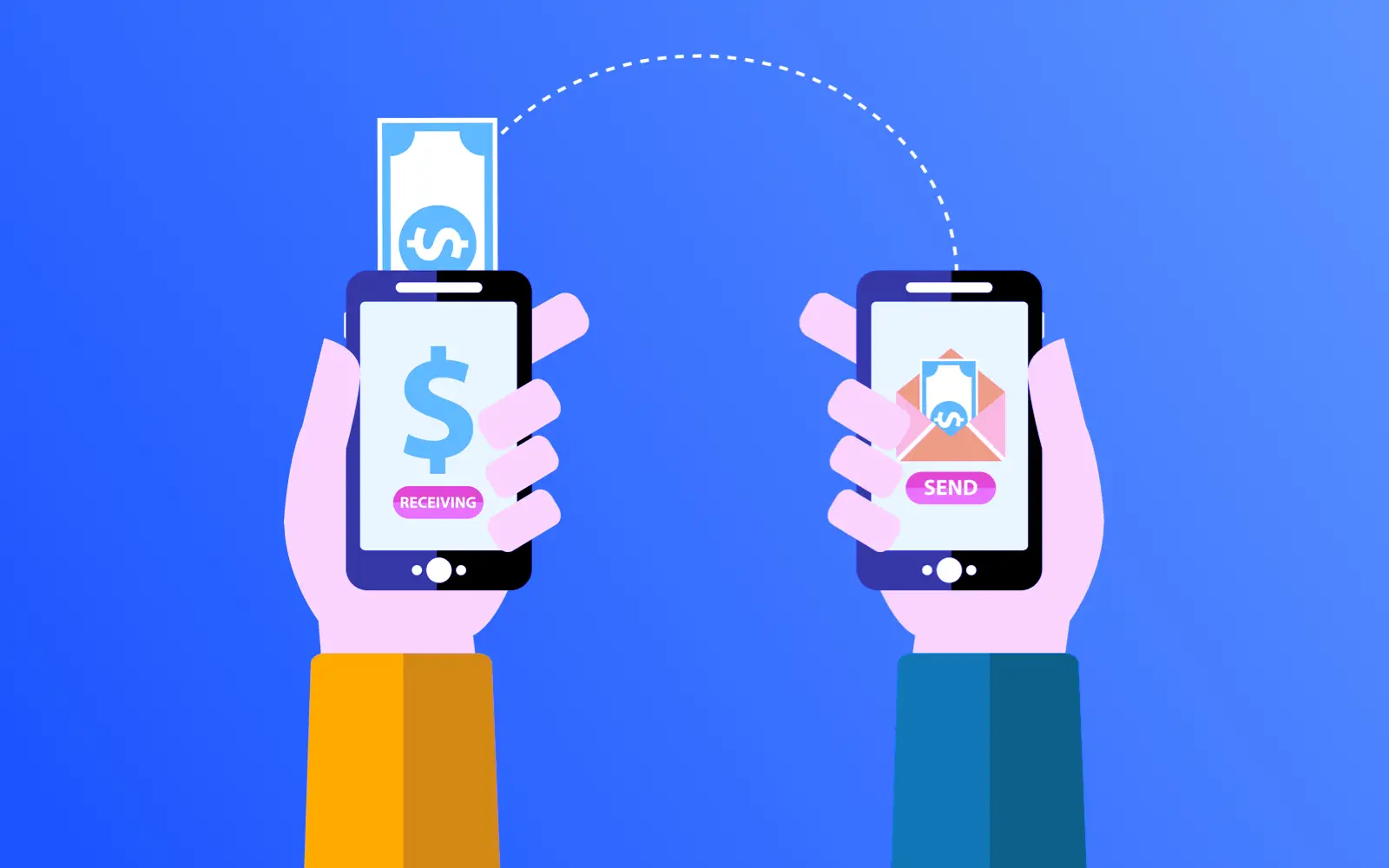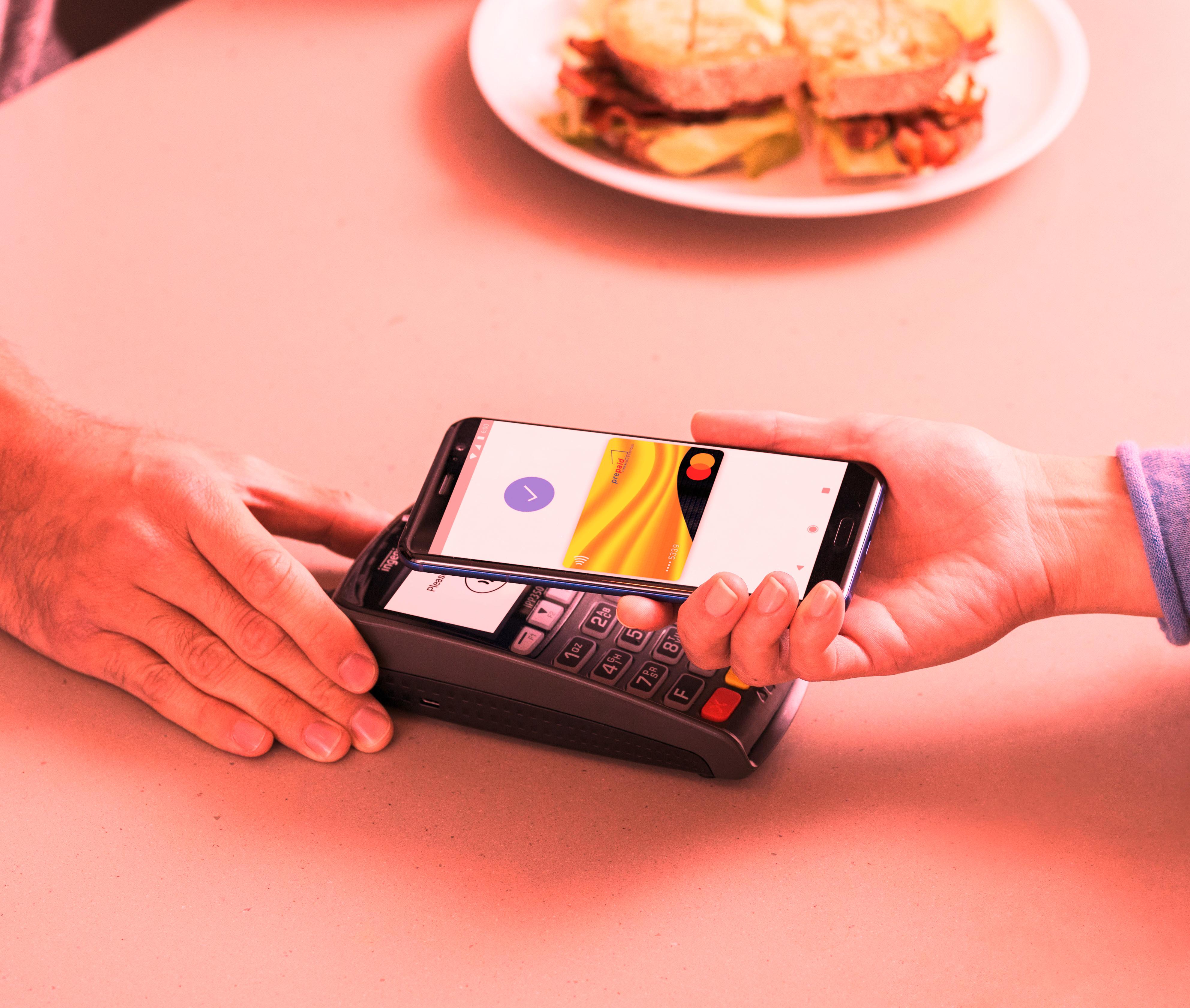The Rise of Mobile Payments: A Comprehensive Guide
Category: Mobile Technology
Date: April 2023
Views: 788
1. Introduction to Mobile Payments
Mobile payments have revolutionized the way we pay for goods and services, enabling fast and secure transactions using our smartphones and other mobile devices.
With the rise of mobile payment platforms like Apple Pay, Google Wallet, and Samsung Pay, consumers can now use their mobile wallets to make purchases online or in-store, often without needing to carry physical credit or debit cards.
Contactless payments using NFC technology have also become increasingly popular, allowing consumers to simply tap their mobile device to a payment terminal to complete a transaction.
The advantages of mobile banking are clear, with added convenience, security, and speed compared to traditional payment methods.
Biometric authentication, such as fingerprint and facial recognition, offers an added layer of security for mobile payments, while blockchain technology offers a decentralized and secure way to process and record transactions.
The growth of in-app payments and QR codes, as well as the potential for cryptocurrencies to become a more widely accepted form of payment, further highlight the importance of mobile payments in today's digital landscape.
By embracing mobile payments, consumers can enjoy a more seamless and efficient payment experience, while businesses can benefit from increased sales and reduced payment processing costs. As we look to the future, it's clear that mobile payments will continue to play a significant role in the way we conduct transactions, with advancements in wearable technology, the Internet of Things, and augmented reality set to drive further innovation in the space.
2. The Rise of Mobile Wallets
With the increasing popularity of smartphones, it's no surprise that mobile payments have become more prevalent. Mobile wallets have emerged as a convenient way for consumers to make purchases without having to carry around physical cards or cash. These electronic accounts store payment information and allow for contactless payments using smartphones. Here are some key points to consider about the rise of mobile wallets:

Mobile wallets such as Apple Pay, Google Wallet, and Samsung Pay have become increasingly popular among consumers as a way to make payments more quickly and easily.
The convenience of mobile wallets has led to a surge in contactless payments made using NFC technology.
Mobile wallets often incorporate biometric authentication, using features like fingerprints or facial recognition, to provide added security and ease of use.
In addition to making purchases in physical stores, mobile wallets also allow for in-app payments for purchases within mobile applications themselves.
The use of mobile wallets is expected to continue growing as more businesses adopt payment processing systems that support them.
As the use of mobile wallets continues to grow, it's important for businesses to ensure that their payment processing systems are equipped to handle them. Providing a seamless and secure mobile payment experience can help businesses attract and retain customers who value convenience and speed.
3. NFC Technology and Its Role in Mobile Payments
Near Field Communication (NFC) technology allows for seamless, contactless transactions between mobile devices and payment terminals. NFC chips, which are embedded in smartphones and other mobile devices, allow users to simply tap or wave their device near a payment terminal to complete a transaction. This technology has become increasingly popular in recent years, as it allows for faster and more convenient transactions, without the need for physical contact with a payment terminal.
The use of NFC technology has been a driving force in the growth of mobile payments, as it allows for quick and secure transactions using mobile wallets and other mobile payment platforms. As more businesses adopt NFC-enabled payment terminals, the use of mobile payments is likely to become even more widespread. Additionally, NFC technology has the potential to be used in other areas beyond traditional payment transactions, such as transportation ticketing and access control.
Some of the advantages of using NFC technology for mobile payments include:
Speed and convenience: NFC transactions can be completed quickly and easily, without the need to fumble with cash or credit cards.
Security: NFC technology uses encryption and other security measures to protect sensitive payment information and prevent fraud.
Contactless transactions: NFC technology allows for contactless transactions, reducing the risk of spreading germs and viruses through physical contact with payment terminals.
Integration with mobile wallets: Many mobile wallets, such as Apple Pay and Google Wallet, use NFC technology to enable contactless transactions.
As NFC technology continues to evolve and become more widespread, it is likely to play an increasingly important role in the future of mobile payments.
4. The Advantages of Mobile Banking
Mobile banking has revolutionized the way we handle our finances. Here are some of the advantages of mobile banking:
Convenience: Mobile banking allows you to access your account information, make transactions, and pay bills from anywhere, anytime, as long as you have an internet connection.
Speed: Mobile banking transactions are usually processed in real-time, which means that your balance and transactions are up-to-date and accurate.
Cost-effective: With mobile banking, you can avoid many of the fees associated with traditional banking, such as overdraft fees, ATM fees, and paper statement fees.
Accessibility: Mobile banking is accessible to anyone with a smartphone or tablet, which means that people who previously may not have had access to banking services can now easily manage their finances.
Personalization: Mobile banking apps often have features that allow you to set up alerts and notifications for specific transactions, balances, or account activities, making it easier to keep track of your finances and avoid overspending.
Security: Mobile banking apps use advanced security measures, such as encryption and biometric authentication, to protect your financial information from fraud and unauthorized access.
The rise of mobile banking has also paved the way for mobile payments, making it even easier to make transactions and manage your finances on the go.
5. Biometric Authentication for Mobile Payments
As mobile payments become more popular, security concerns have also increased. To address these concerns, many mobile payment platforms have begun using biometric authentication methods. Biometric authentication involves using unique physical or behavioral characteristics, such as fingerprints or facial recognition, to verify the identity of the user.
Some of the benefits of biometric authentication for mobile payments include:
Increased Security: Biometric authentication methods are more secure than traditional password or PIN-based authentication methods because they cannot be easily duplicated or guessed.
Improved User Experience: Biometric authentication is faster and more convenient than entering a password or PIN, making the payment process smoother and more user-friendly.
Reduced Fraud: With biometric authentication, the risk of fraud is significantly reduced because it is difficult for someone to impersonate another person's biometric data.
Mobile payment platforms like Apple Pay, Samsung Pay, and Google Wallet all offer biometric authentication options, such as fingerprint or facial recognition. As technology continues to advance, biometric authentication is likely to become even more prevalent in the mobile payment industry.
6. Blockchain Technology and Its Impact on Mobile Payments
Blockchain technology is a decentralized, secure way of processing and recording mobile payments. Instead of relying on a centralized authority to validate and approve transactions, blockchain uses a network of computers to verify and record transactions in a secure and transparent way. This technology has the potential to revolutionize mobile payments in several ways:
Increased security: Blockchain technology uses advanced cryptography to secure transactions, making it nearly impossible for fraudsters to manipulate or forge transactions. This means that mobile payments made using blockchain technology are much more secure than traditional payment methods.
Reduced transaction fees: Because blockchain technology eliminates the need for intermediaries like banks or payment processors, transaction fees can be significantly reduced. This could lead to lower costs for both merchants and consumers, making mobile payments a more attractive option.
Faster transaction processing: Blockchain transactions can be processed and settled much faster than traditional payment methods, which can take several days to complete. This speed could make mobile payments more convenient for consumers, who may prefer the instant gratification of a blockchain-based transaction.
Global reach: Blockchain technology has the potential to make mobile payments accessible to anyone, anywhere in the world. Because blockchain transactions are decentralized and do not rely on a centralized authority, they can be processed across borders and currencies without the need for intermediaries.
As blockchain technology continues to evolve, it is likely that we will see more and more applications of this technology in the mobile payments space. From increased security to lower transaction fees and faster processing times, blockchain technology has the potential to transform the way we think about mobile payments.
7. The Growth of Contactless Payments
Contactless payments are a fast-growing trend in mobile payments, offering convenience and speed for consumers. With the increasing popularity of mobile wallets and NFC technology, contactless payments are becoming more widely accepted by merchants and retailers. Here are some key points to consider:
Contactless payments use NFC technology to allow for transactions without the need for physical contact with a payment terminal.
Mobile wallets like Apple Pay and Google Wallet have integrated contactless payment capabilities, allowing users to simply hold their phone near a payment terminal to complete a transaction.
The COVID-19 pandemic has accelerated the growth of contactless payments, as consumers seek to avoid touching shared surfaces and prefer the convenience of contactless transactions.
Contactless payments are not limited to smartphones and can also be made using contactless-enabled debit and credit cards, as well as wearable devices like smartwatches and fitness trackers.
Merchants who accept contactless payments are likely to see increased sales, as consumers are more likely to make impulse purchases and spend more when using mobile payment options.
As contactless payment technology continues to evolve and become more widely adopted, we can expect to see further growth in this area of mobile payments.
8. The Role of Digital Currencies in Mobile Payments

As mobile payments become more prevalent, there has been a growing interest in digital currencies, such as Bitcoin and Ethereum. These digital currencies have the potential to revolutionize the way we think about money and how we make transactions. Here are some key points to consider regarding the role of digital currencies in mobile payments:
Cryptocurrencies offer a new form of payment – Digital currencies provide an alternative to traditional currencies, allowing for decentralized, peer-to-peer transactions that are not subject to government control or oversight.
Cryptocurrencies can increase payment security – Blockchain technology, which is used to process digital currency transactions, offers a high level of security and transparency. Transactions are recorded in a decentralized ledger, making it more difficult for hackers to compromise the system.
Cryptocurrencies can facilitate cross-border payments – Because digital currencies are not tied to a specific country or currency, they can make international payments faster and cheaper.
Some mobile payment platforms already support digital currencies – For example, Coinbase, a popular digital currency exchange, allows users to link their Coinbase account with their PayPal account to make payments.
However, there are still challenges to overcome – Digital currencies are still relatively new and not widely accepted, and there are concerns around their volatility and lack of regulation.
Overall, digital currencies have the potential to play an important role in the future of mobile payments, but their adoption and integration into mainstream payment systems is still in its early stages.
9. The Importance of Mobile Payment Security
Mobile payments have become increasingly popular due to their convenience and ease of use. However, with the rise of mobile payments comes the need for increased security measures to protect users' sensitive financial information.
Some of the key security concerns surrounding mobile payments include data breaches, fraud prevention, and encryption. To address these concerns, mobile payment platforms have implemented a variety of security measures such as tokenization, two-factor authentication, and biometric authentication.
Additionally, regulatory bodies have also implemented standards and guidelines for mobile payment security, such as the Payment Card Industry Data Security Standard (PCI DSS) and the European Union's General Data Protection Regulation (GDPR).
It is important for users to educate themselves on the security features of their mobile payment platform and take steps to protect their personal information, such as setting strong passwords and regularly monitoring their account activity. By prioritizing mobile payment security, users can enjoy the convenience of mobile payments while minimizing the risks associated with handling sensitive financial information online.
10. Peer-to-Peer (P2P) Payments on the Rise

Peer-to-peer (P2P) payments have been on the rise in recent years, thanks in part to the growth of mobile payments. P2P payments allow individuals to send and receive money directly from their mobile devices, without the need for a middleman such as a bank or payment processor.
Mobile payment platforms like Venmo, PayPal, and Square Cash have made P2P payments more accessible and convenient for users, and the popularity of these services has led to increased adoption of P2P payments overall.
One advantage of P2P payments is their speed and ease of use. Users can quickly and easily send money to friends or family members, split bills at restaurants or events, or even pay for goods and services from individual sellers.
Another advantage is the lower transaction fees associated with P2P payments compared to traditional payment methods. Since there is no middleman involved, the fees for P2P payments are typically lower than those for credit card transactions or wire transfers.
However, P2P payments also come with their own set of security concerns, including the risk of fraud and the potential for unauthorized access to personal financial information. As such, it is important for users to take steps to protect themselves when using P2P payment platforms, such as enabling two-factor authentication and monitoring their accounts regularly.
Overall, P2P payments are a growing trend in the mobile payment space, offering users a fast, convenient, and cost-effective way to send and receive money directly from their mobile devices.
11. QR Codes: The Future of Mobile Payments?
Quick Response (QR) codes are becoming increasingly popular as a method of payment due to their convenience and ease of use. QR codes can be scanned with a mobile device, allowing customers to quickly and securely complete transactions without the need for physical payment methods like cash or credit cards.
Mobile payment platforms like Apple Pay and Google Wallet have already implemented QR code payment options, and many businesses are following suit. QR codes can be used for in-person transactions, as well as for online purchases and peer-to-peer (P2P) payments.
The use of QR codes for mobile payments also has the potential to significantly reduce costs for businesses, as they no longer need to invest in expensive payment processing hardware. Additionally, QR codes can be customized to include information such as discounts, loyalty points, and other incentives, making them an attractive option for both merchants and customers.
However, as with any payment method, security remains a concern with QR codes. To mitigate the risk of fraud, businesses must ensure that their QR codes are properly encrypted and secured. Consumers should also be cautious when using QR codes for payments and only use trusted sources to avoid potential scams.
Overall, QR codes represent a promising new technology in the world of mobile payments, offering a fast, convenient, and cost-effective payment option for both businesses and consumers.
12. Wearable Technology and Mobile Payments
Wearable technology has gained popularity in recent years, and its integration with mobile payments has been seamless. Smartwatches and fitness trackers are examples of wearable devices that can store payment information and allow users to make purchases with a simple tap. This feature is beneficial, especially for fitness enthusiasts who prefer to leave their smartphones at home when working out.
The integration of wearable technology in mobile payments offers convenience and portability. With this feature, consumers can make payments quickly, securely, and without the need to carry their smartphones or wallets. Some examples of wearable devices that allow mobile payments include the Apple Watch, Garmin Pay, and Fitbit Pay.
Wearable technology can also improve security in mobile payments. For instance, smartwatches can use biometric authentication to verify transactions, making it difficult for unauthorized parties to access payment information. Additionally, wearable devices use encryption technology, ensuring that payment data is kept private and secure.
Overall, wearable technology offers a unique and exciting opportunity for mobile payments to continue to evolve and expand. As wearable technology continues to grow in popularity, we can expect to see more devices that offer seamless integration with mobile payments.
13. Digital Receipts: The Future of Transaction Records
As mobile payments become more prevalent, the need for digital receipts is also on the rise. Digital receipts are electronic records of transactions that customers can access through their mobile devices or email. This technology offers several advantages for both businesses and customers.
Here are some key points about digital receipts and their benefits:
Digital receipts can help reduce paper waste and contribute to a more sustainable environment.
Customers can easily access and organize digital receipts on their mobile devices, which can help with tracking expenses and budgeting.
For businesses, digital receipts can help streamline accounting and inventory management processes by providing real-time data on sales and inventory levels.
Digital receipts can also improve customer engagement and loyalty by providing a personalized experience and offering targeted promotions or discounts based on previous purchase behavior.
Overall, digital receipts are becoming an essential feature of mobile payment systems. As more businesses adopt mobile payment technology, the use of digital receipts is likely to become even more widespread. By providing a convenient and eco-friendly alternative to traditional paper receipts, digital receipts are poised to become the future of transaction records.
Conclusion: The Future of Mobile Payments
Mobile payments have come a long way in a relatively short amount of time, and they show no signs of slowing down. With the rise of mobile wallets, NFC technology, biometric authentication, blockchain, and digital currencies, mobile payments have become more accessible, secure, and convenient than ever before.
As contactless payments and P2P payments continue to grow in popularity, and wearable technology and QR codes offer new possibilities for mobile payments, the future looks bright for this technology. Digital receipts are also likely to become more prevalent, providing a more efficient and eco-friendly way to keep track of transactions.
However, with this growth comes an increased need for mobile payment security. It is important that companies continue to invest in security measures and educate users on best practices to ensure that mobile payments remain safe and secure.
Overall, mobile payments offer a promising future for consumers, businesses, and the economy as a whole. As technology continues to evolve, mobile payments are sure to play a key role in shaping the way we exchange goods and services.




















0 Comments, latest
No comments.